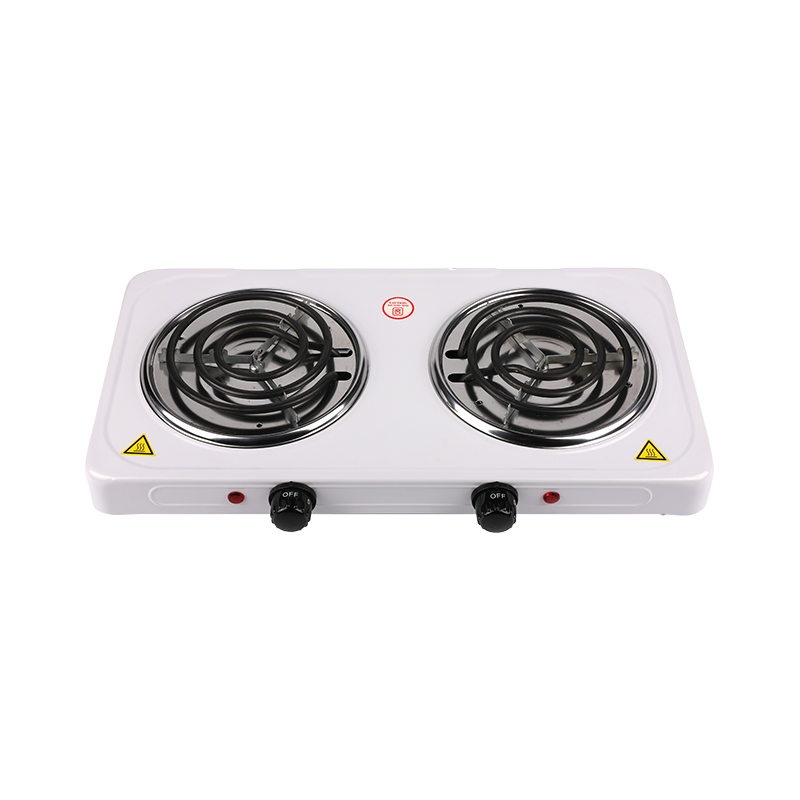Intelligent, efficient and energy-saving single hot plate
Cat:Single Hot Plate
In the realm of culinary innovation, our company stands at the forefront with its cutting-edge single hot plate, engineered to embody the trifecta of ...
See DetailsWhen it comes to portable cooking appliances, hot plates have long been a convenient option for homes, dormitories, outdoor kitchens, and laboratory use. Among the different types available today, the Spiral Heating Hot Plate has gained attention as a practical alternative to traditional models. While both serve similar purposes, there are clear differences in design, performance, and application that set them apart. Understanding these distinctions can help users select the option that meets their specific needs.

A Spiral Heating Hot Plate uses a coiled metal heating element that sits on the surface of the appliance. This exposed spiral design allows heat to transfer directly to the base of cookware, offering consistent and manageable heat levels. In contrast, traditional hot plates typically rely on flat, solid heating surfaces that can be made from cast iron, ceramic, or glass. These flat models heat the cooking vessel through indirect contact, often resulting in slower warm-up times and uneven heat distribution in certain situations.
One of the noticeable benefits of a Spiral Heating Hot Plate is its relatively quick heating capability. Because the coil is in direct contact with the cookware, it can deliver warmth more efficiently. This feature is useful for users who need to boil water, heat sauces, or simmer soups without waiting long for the surface to reach the desired temperature. While traditional hot plates can achieve similar results, they usually require a longer preheating period, especially those with thicker or solid surfaces.
Portability is another important factor when choosing between these appliances. A Spiral Heating Hot Plate is often lighter in weight due to its open-coil construction and simpler design. This makes it easy to move, store, or transport for outdoor use or temporary kitchen setups. Traditional hot plates, particularly those with heavy cast-iron plates, tend to be bulkier and may require more space for storage and handling.
Temperature control is another area where differences become clear. Many Spiral Heating Hot Plate models come with adjustable knobs, allowing users to select different heat settings for various types of cooking. Because the heat transfer is direct, adjustments on a Spiral Heating Hot Plate typically take effect more quickly than on a traditional hot plate. Traditional versions, with their flat surfaces, often retain heat for longer periods after being turned off, which can be both an advantage and a disadvantage depending on the task.
Cleaning and maintenance are additional points of comparison. The Spiral Heating Hot Plate usually features an exposed coil and drip tray underneath. While this design makes it easy to access and wipe down the coil area, it can also allow spills to reach the heating element, requiring regular cleaning. Traditional hot plates, especially those with a flat glass or ceramic surface, are often simpler to clean after light cooking tasks, although stuck-on food can sometimes be more difficult to remove from solid plates.
Durability depends on how each type of appliance is used and maintained. A Spiral Heating Hot Plate is typically well-suited for light to medium-duty use in homes, small kitchens, and temporary setups. With proper care, the coil element can last for many years. Traditional hot plates made of cast iron or ceramic may offer sturdier construction for heavier cookware and extended use, though they also tend to be heavier and less convenient for quick setup or storage.
In terms of application, a Spiral Heating Hot Plate is commonly chosen for casual cooking, backup kitchen use, or as an additional burner for busy meal preparations. It’s also widely used in laboratory settings where controlled heating of small containers is needed. Traditional hot plates are often favored for their ability to provide steady, long-lasting heat, making them suitable for tasks such as slow simmering, stewing, or heating thicker materials.
Energy efficiency is another aspect worth considering. Because of the direct contact heating style, a Spiral Heating Hot Plate can sometimes be more energy-efficient for short-term tasks. Less heat is lost through indirect contact, and users can achieve desired results with lower energy consumption in certain cases. Traditional hot plates, while effective for extended cooking, may consume more power during their longer preheating and heat retention phases.